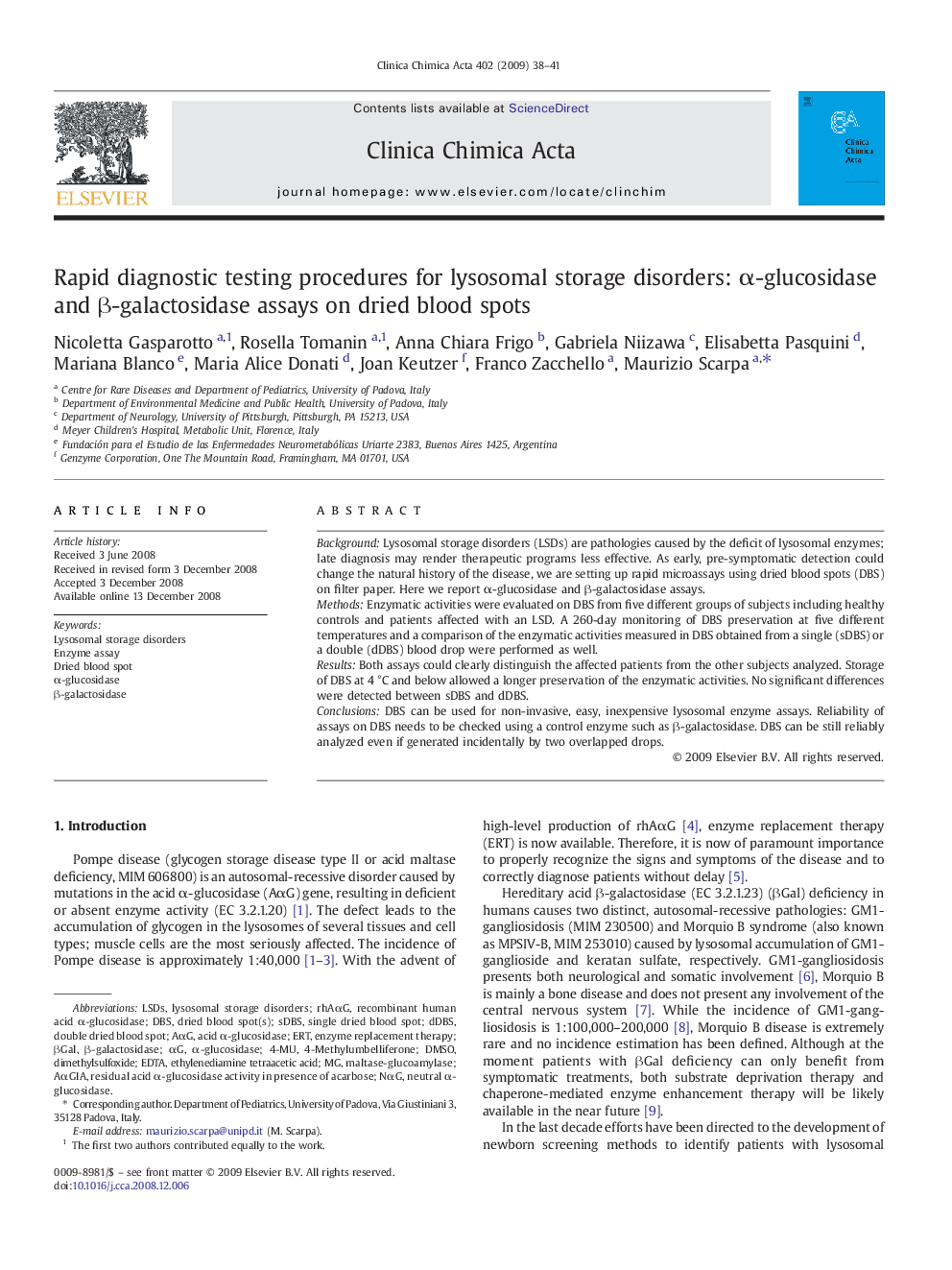| Article ID | Journal | Published Year | Pages | File Type |
|---|---|---|---|---|
| 1966189 | Clinica Chimica Acta | 2009 | 4 Pages |
BackgroundLysosomal storage disorders (LSDs) are pathologies caused by the deficit of lysosomal enzymes; late diagnosis may render therapeutic programs less effective. As early, pre-symptomatic detection could change the natural history of the disease, we are setting up rapid microassays using dried blood spots (DBS) on filter paper. Here we report α-glucosidase and β-galactosidase assays.MethodsEnzymatic activities were evaluated on DBS from five different groups of subjects including healthy controls and patients affected with an LSD. A 260-day monitoring of DBS preservation at five different temperatures and a comparison of the enzymatic activities measured in DBS obtained from a single (sDBS) or a double (dDBS) blood drop were performed as well.ResultsBoth assays could clearly distinguish the affected patients from the other subjects analyzed. Storage of DBS at 4 °C and below allowed a longer preservation of the enzymatic activities. No significant differences were detected between sDBS and dDBS.ConclusionsDBS can be used for non-invasive, easy, inexpensive lysosomal enzyme assays. Reliability of assays on DBS needs to be checked using a control enzyme such as β-galactosidase. DBS can be still reliably analyzed even if generated incidentally by two overlapped drops.
